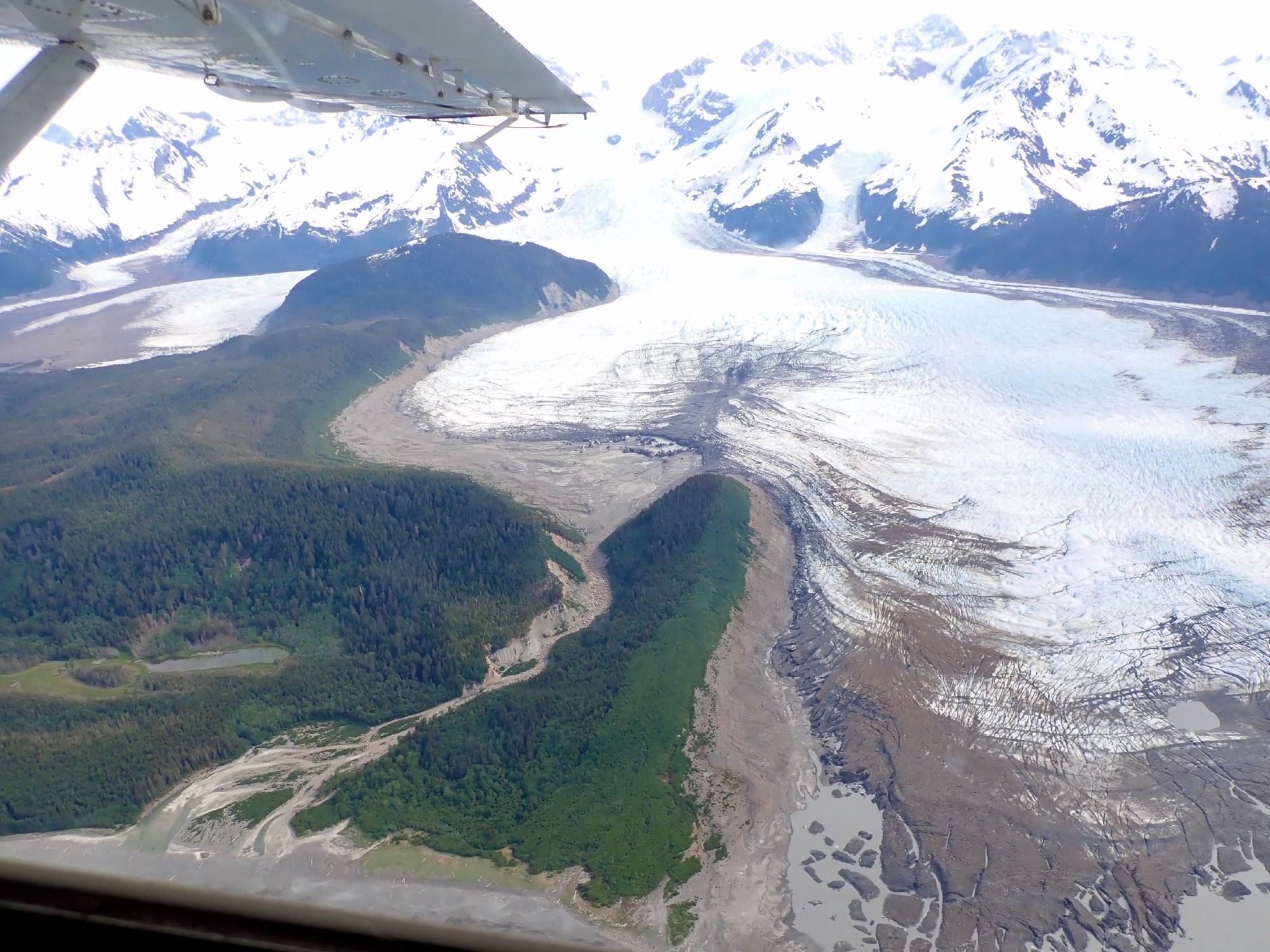According to the scientists of a new 166-year case study of an Alaskan glacier that has been rapidly advancing and retreating, a cool pocket climate near a glacier’s snout may be able to help scientists predict how forests will react to rapid climate change.
 The trees around La Perouse glacier, in Glacier Bay National Forest, recorded microclimate changes as the glacier advanced and retreated. A new study in AGU’s Geophysical Research Letters reports on how scientists can use those records to predict how near-glacier ecosystems will respond to future climate change. Image Credit: B. Gaglioti.
The trees around La Perouse glacier, in Glacier Bay National Forest, recorded microclimate changes as the glacier advanced and retreated. A new study in AGU’s Geophysical Research Letters reports on how scientists can use those records to predict how near-glacier ecosystems will respond to future climate change. Image Credit: B. Gaglioti.
Anyone may have experienced a chilly air pocket next to a snowbank when hiking in the mountains or walking past a snowbank on the pavement.
The same effect is seen in trees close to glaciers, which can have an impact on their growth. According to a recent study published in the AGU’s Geophysical Research Letters, trees store the history of cooling in their yearly growth rings.
Temperature is one of many elements that affect tree ring growth. Many species experience slower growth and narrower or denser rings as a result of cooler, drier conditions. In an unparalleled close-up look at historical glacial microclimates, the research, directed by ecologist Ben Gaglioti, establishes this association between the La Perouse glacier and the neighboring Glacier Bay National Forest.
The study uncovered that the glacier quickly progressed hundreds of meters during the late 1800s, fluctuated during the early 1900s, then started to retreat around 1950 based on historical reports, tree cores, and aerial photographs. The next step was to see if the trees had kept track of any changes in the microclimate during those times.
The researchers used 118 cores from an old-growth yellow cedar forest to reconstruct temperatures between 1855 and 2021.
The researchers discovered a definite slowing in growth as the glacier advanced and an improvement in growth rates as it retreated after accounting for regional temperatures and elevation. In the summer, the glacier advance reduced the forest’s temperature by over 4 °C (or 7 °F).
That was stunning to me. Because of the glacier’s advance and retreat, the La Perouse Forest experienced some of the fastest rates of historical cooling and warming on Earth, but climate models indicate these rates of change will become more common in the next century. Studying these types of glacier-adjacent ecosystems can help us understand how they may respond to the unprecedented rate of warming in the future.
Ben Gaglioti, Ecologist, American Geophysical Union
Camping On Ice
Gaglioti and his coworkers made the discovery while looking at layers of trees that were once buried after being trampled by glaciers in the 19th century. While taking samples of the rainforest trees just outside of the glacier’s footprint, the researchers noted that the tree rings had compressed growth during the late 1800s, as the glacier advanced — pushing its bubble of cold air out into the woods.
“Then we had this idea to monitor the size and intensity of the cold microclimate around the ice using temperature sensors,” Gaglioti says. “If the glacier went back and forth and this microclimate influenced the surrounding forest, we could use it as an experiment,” to predict how ecosystems may respond to quick climate change in the upcoming days. But initially, they had to trace the seasonality of the microclimate today.
For three years, from July 2018 to July 2021, Gaglioti and his colleagues erected a network of temperature sensors around La Perouse Glacier that extended hundreds of meters. The microclimate reached the furthest they have placed sensors, at least 600 m, into the forest.
Without access to more distant sensors, “it’s hard to constrain where it actually ends,” Gaglioti says.
The discoveries also provide a crucial source of data for retracing the path taken by ancient glaciers and their impact on the local environment.
If you look at trees that were run over by the ice, you can see the cooling effects as the ice approaches them, before they die.
Ben Gaglioti, Ecologist, American Geophysical Union
The trees that remain provide crucial temperature data as the glacier recedes, as well as perceptions of the speed of retreat and potential implications on ecological succession once the ice has retreated.
There is still room for improvement. In the microclimate of La Perouse, there are five more tree species, and preliminary findings indicate that each species reacts to climate change differently. Gaglioti expects to be able to utilize these recordings to learn more about how an entire forest reacts to extreme freezing and warming.
To investigate the climate sensitivity of various biological systems, from microorganisms to mammals, similar microclimate records from other locations can be employed.
Journal Reference:
Gaglioti, B. V., et al. (2022) Ecosystems at Glacier Margins Can Serve as Climate-Change Laboratories. Geophysical Research Letters. doi.org/10.1029/2022GL098574.